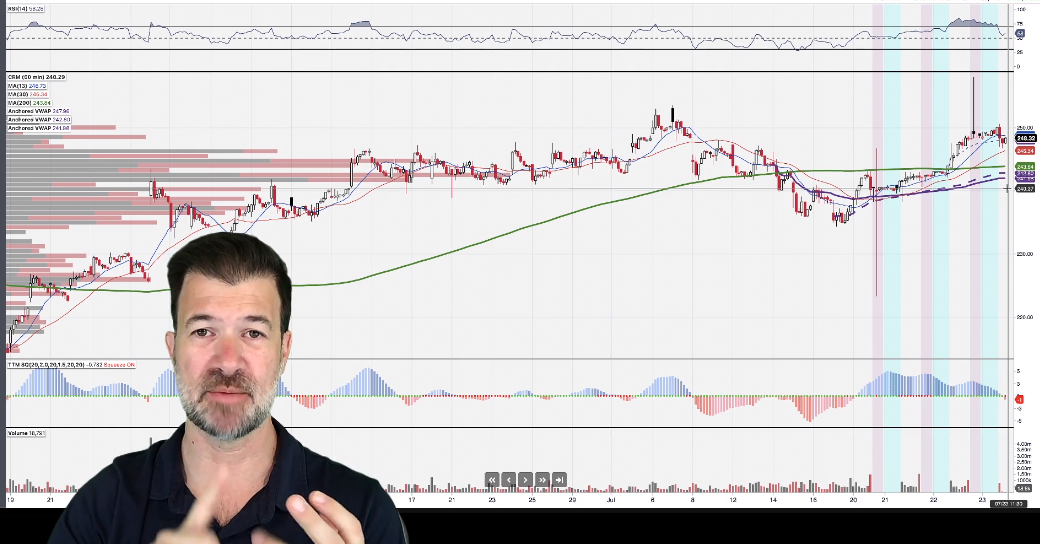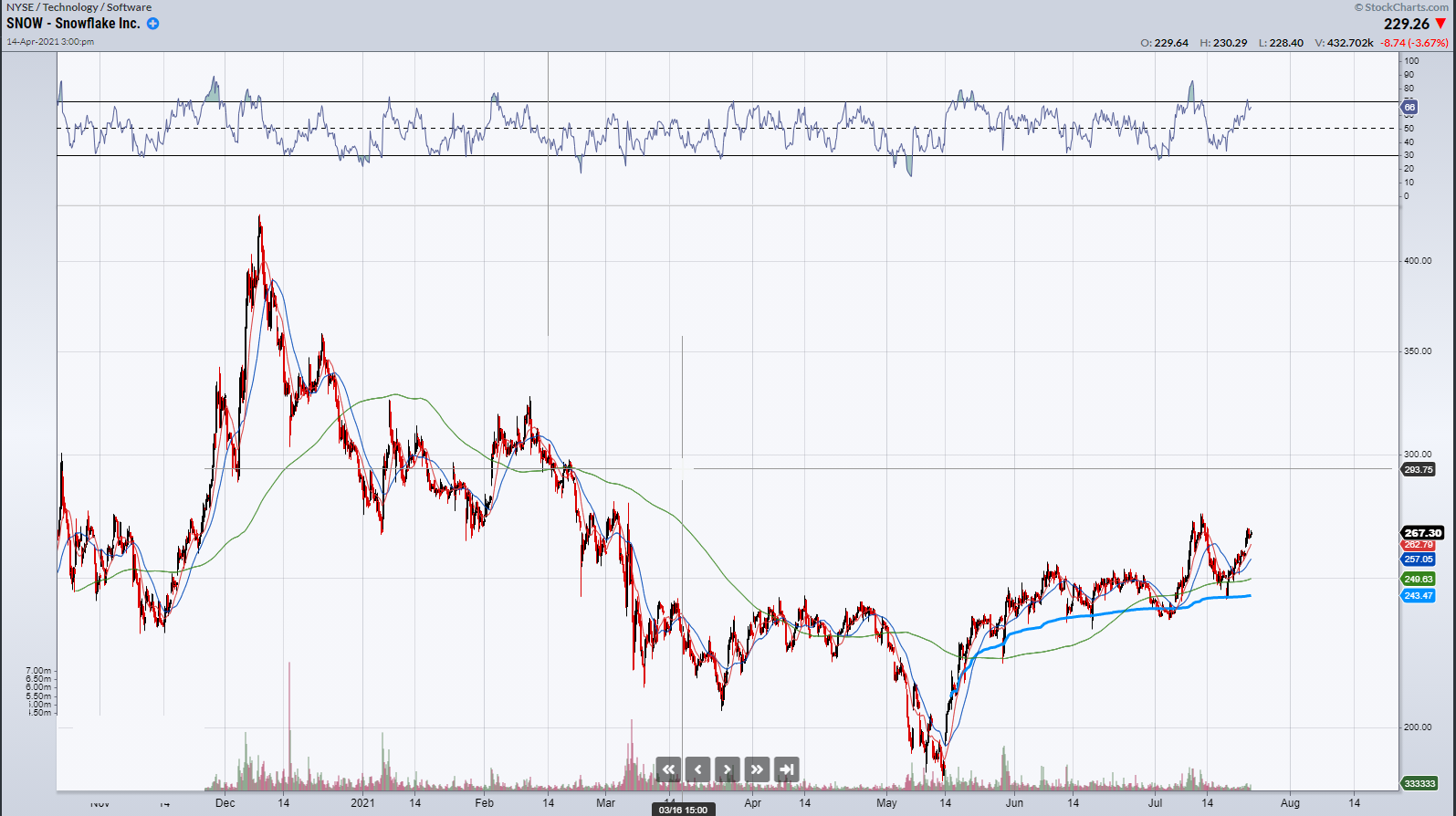I love trading options.
They allow me to define my risk and stay flexible while I let my trade idea play out. A great example is a trade I made in Snowflake INC (SNOW) a few weeks back and managed this week.
I’m excited to explain how I used call options to put myself in a position of strength in a working trade.

And how I was able to button up some risk, while keeping the trade alive. It’s not a strategy I apply often, but given how this trade has gone according to plan, I will start doing more of these.
Defining Risk
A huge part of trading is managing risk. Often beginner traders ask themselves, “how much can I make on a trade”?. They figure out how much they want to make and click the buy or sell button. Professional traders approach trading by doing the opposite. They ask themselves, “What is my Risk?”, “What can go wrong?” and plan accordingly.
The reason is simple, every seasoned Trader I know has been through the baptism of fire. They’ve made mistakes, taken crushing losses, and understand that the only way to survive in this game long term is to focus on managing downside risk.
This is one of the reasons that, for the most part, I like to structure my trade ideas using options. They allow me to define my risk before I enter a trade, not only that they give me the flexibility to manage my position while a trade is working. Guess what? They give me options, pun intended.
Let’s take a look at a trade I made in SNOW over the last couple of weeks and how I managed my trade using options to put myself in a position of strength.
The SNOW Trade
After bottoming out at $190 falling 57% from its high of $428 SNOW began to stabilize in June, consolidating around the $240 area. $240 had been a prior area of resistance, but now this level was finding buyers becoming a potential area of support.

In addition, the 200 hour moving average was curling up, and the anchored VWAP since the $190 level had become support. SNOW tested the anchored VWAP on three occasions, and each time buyers came in with force.
Technically to me this trade idea had everything I like in a trade. Strong up move, consolidation with support. I also like the fundamentals of the company and given the recent strength in the SPY and QQQ’s I thought SNOW had the potential to go higher and that this was a great spot to get in.
Given all of the above, I had more conviction on this trade than usual. When I have added conviction, I like to buy calls outright instead of selling put spreads, my typical bread, and butter strategy. So, I started buying the $280 calls for a premium of $3.40.
As it turned out, I had a great read on this stock, and my thesis was proven correct, SNOW moved higher. It moved from the $240 level to as high as $275. Now I had a decision to make. Do I take some off the table here? Do I let the rest of my trade ride for a move higher, risking the premium I laid out?
As a professional Trader I always want to be approaching my trading decisions from a position of strength. I think that SNOW can move higher and want to let the trade play out because I believe in being ready for good opportunities. As the great Jesse Livermore once said, “The money is in the sitting, not trading.” At the same time, I want to reduce my risk as much as possible.
So I opened up the options chain to literally have a look at what my options were. Due to the up move, I noticed the $300 calls in SNOW were now selling for $3.10. By selling these options and receiving $3.10 in premium I now have a call spread that overall cost me only 30c ($3.40 paid minus $3.10 received).
To recap, I am now long the $280 calls and short the $300 calls for a cost of 30c. That’s $20 of upside for only 30c of risk and a Reward/Risk ratio of 66 to 1. That is what I call trading from a position of strength and giving myself an edge in the markets.
There are still a few weeks left for this trade to play out, but I have significantly reduced my risk and have a lot of potential upside. This is why I love trading options.
Bottom Line
Managing risk is one of my most important jobs as a trader. That is why I love using advanced options strategies. My risk is always defined, and I can stay flexible when managing my position throughout the course of a trade.
As was explained by my trade in SNOW from a few weeks back, I try to limit my downside and get ready for good opportunities. These types of skewed risk/reward setups allow professional traders to be in a good position over the long term.






5 Comments
Thanks Jeff – that’s the best explanation of managing risk I have ever read – I’ve been relying on put selling on stock I think have potential – if exercised I continue to sell calls on the stock – I made alot on RBLX selling 5 consecutive profitable calls on this one stock
thank you, much appreciate
Love your passion,,love your desire to help people.
That was an excellent idea and things are looking good for you
Sounds like a good strategy. I will be curious to see know how you make out on this trade. I am new at the trading business and I am thinking about trading options.